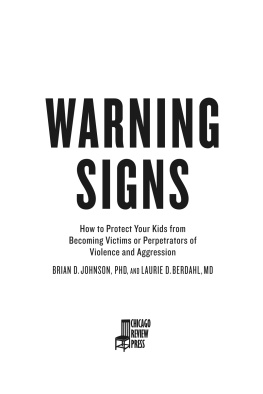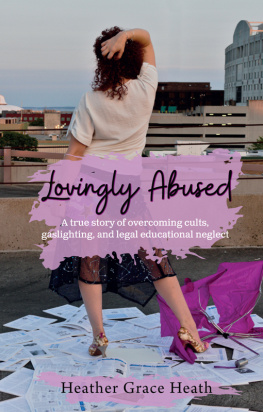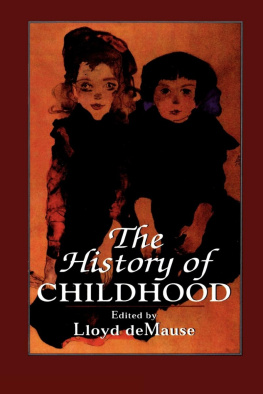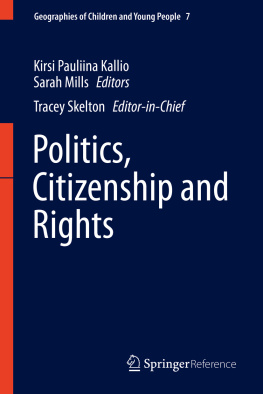THE
HISTORY
OF
CHILDHOOD
Lloyd deMause, Editor

A JASON ARONSON BOOK
ROWMAN & LITTLEFIELD PUBLISHERS, INC.
Published in the United States of America
by Rowman & Littlefield Publishers, Inc.
A wholly owned subsidiary of The Rowman & Littlefield Publishing Group, Inc.
4501 Forbes Boulevard, Suite 200, Lanham, Maryland 20706
www.rowmanlittlefield.com
PO Box 317
Oxford
OX2 9RU, UK
Copyright 1974 by Lloyd deMause
First paperback edition 1995
First Rowman & Littlefield edition 2006
All rights reserved. No part of this publication may be reproduced, stored in a retrieval system, or transmitted in any form or by any means, electronic, mechanical, photocopying, recording, or otherwise, without the prior permission of the publisher.
British Library Cataloguing in Publication Information Available
Library of Congress Cataloging-in-Publication Data
The History of childhood / edited by Lloyd deMause. 1st Jason Aronson paperback edition.
p. cm.
Originally published: New York : Psychohistory Press, 1974.
Includes index.
ISBN: 978-1-56821-551-8
1. Child rearingHistory. 2. Parent and childHistory. 3. Child abuseHistory. I. DeMause, Lloyd.
HQ769.H68 1995
305.2309dc20
95-8056
Printed in the United States of America
 The paper used in this publication meets the minimum requirements of American National Standard for Information SciencesPermanence of Paper for Printed Library Materials, ANSI/NISO Z39.48-1992.
The paper used in this publication meets the minimum requirements of American National Standard for Information SciencesPermanence of Paper for Printed Library Materials, ANSI/NISO Z39.48-1992.
Contents
William L. Langer |
Lloyd deMause |
Lloyd deMause |
Richard B. Lyman, Jr. |
Mary Martin McLaughlin |
James Bruce Ross |
M. J. Tucker |
Elizabeth Wirth Marvick |
Joseph E. Illick |
John F. Walzer |
Patrick P. Dunn |
Priscilla Robertson |
Foreword
The direction of human affairs has never been confided to children, and historians, who have concerned themselves primarily with political and military affairs and at most with the intrigues and rivalries of royal courts, have paid almost no attention to the ordeals of childhood. Even the students of education have, on the whole, devoted themselves to the organization and curricula of schools, and with the theories of education, with only occasional reference to what happened to the pupils at home and in the world at large.
Yet it seems clear that the history of childhood must be of major importance to any study of human society, for if, as it is said, the child is father to the man, it should be possible, with an understanding of any individuals or any groups past, to form a more intelligent judgment of their performance as adults. For that reason the present experiment in reviewing systematically the attitudes and practices of parents towards their children is to be warmly welcomed. Whatever the findings of the scholars contributing to this pioneer volume, they will all substantially add to our knowledge of mankinds past and so deepen our understanding of changing attitudes and reactions.
Unhappily the results of these investigations are most depressing. They tell a long and mournful story of the abuse of children from the earliest times even to the present day. We need not assume that the generalizations here advanced apply to all people at all times. No one can doubt that there have always been parents who loved and cherished their children and that such mistakes as they may have made in the upbringing were due to ignorance rather than to ill-will. As a matter of fact, while in our own day cases of battered children are shockingly common, it must be said that ever since the eighteenth century a more humanitarian attitude gradually emerged. Parenthetically one is reminded of the fact that in England societies for the prevention of cruelty to animals sprang up at least as early as societies for the prevention of cruelty to children.
Possibly the heartless treatment of children, from the practice of infanticide and abandonment through to the neglect, the rigors of swaddling, the purposeful starving, the beatings, the solitary confinement, and so on, was and is only one aspect of the basic aggressiveness and cruelty of human nature, of the inbred disregard of the rights and feelings of others. Children, being physically unable to resist aggression, were the victims of forces over which they had no control, and they were abused in many imaginable and some almost unimaginable ways by way of expressing conscious or more commonly unconscious motives of their elders.
There may well have been yet another facet to the problemone which can never be proved, but for which there are many indicators. Humans, like all animals and plants, have an almost infinite reproductive potential. More babies have always been born than society could provide room or employment for. Hence the widespread practice of infanticide in one form or another, the chief victims always being the female infants who would eventually produce yet more souls. Hence probably also the notion, prevalent at least in the Christian world, that sex relations were sinful and that the resultant offspring was, from the moment of birth, evil. How else is one to explain the cruel practices designed to exorcise the evil and make children less of a nuisance than they were? Countless women felt that they had too many children. The well-to-do upper classes, it is true, were frequently concerned to ensure themselves of an heir to the estate, and in some parts of the world it is even now true that peasant families desire large families so as to provide for their old age. But in the Western world, when life expectancy at birth was thirty years or less, this was not a controlling factor. Peasant women who had to work all day in the fields tended to regard young children as an encumbrance and took any and every means to discipline and quiet them. That children were put to work at a very early age is no news, but even at work they were often treated more as slaves than as humans. In short, children were not uncommonly looked upon as a real burden, and often called forth resentment and hostility.
The present volume abounds in evidence of all kinds, from all periods and all peoples. The story is monotonously painful, but it is high time that it should be told and that it should be taken into account not only by psychiatrists and sociologists, but also by historians. So large and crucial a segment of human existence should not forever remain veiled and neglected by those whose mission it is to recover mans past.
William L. Langer
Archibald Cary Coolidge Professor of History, Emeritus
Harvard University
Past President, American Historical Association
Editors Preface
What was it like to have been a child in colonial America, or in Renaissance Italy? Did parents always act much the same as they do today? Did they love and care for their children in similar ways, or has child care changed substantially over the centuries? How did parents feel about their children, what did they say to them, what were their private fantasies about them, and how did these affect growing up in the past?
These are the kinds of questions the ten of us who are the authors of this book asked ourselves five years ago as we embarked upon the major research project of writing a history of childhood in the West, to be conducted under the auspices of the Association for Applied Psychoanalysis. What we found was a fascinating story in its own right, but it is also a story which cannot help but have a major effect on our understanding of history and of how we got to where we are today. If perspective is all, it is surely most important in our crucial task of raising the next generation who will run the world we leave them.








 The paper used in this publication meets the minimum requirements of American National Standard for Information SciencesPermanence of Paper for Printed Library Materials, ANSI/NISO Z39.48-1992.
The paper used in this publication meets the minimum requirements of American National Standard for Information SciencesPermanence of Paper for Printed Library Materials, ANSI/NISO Z39.48-1992.